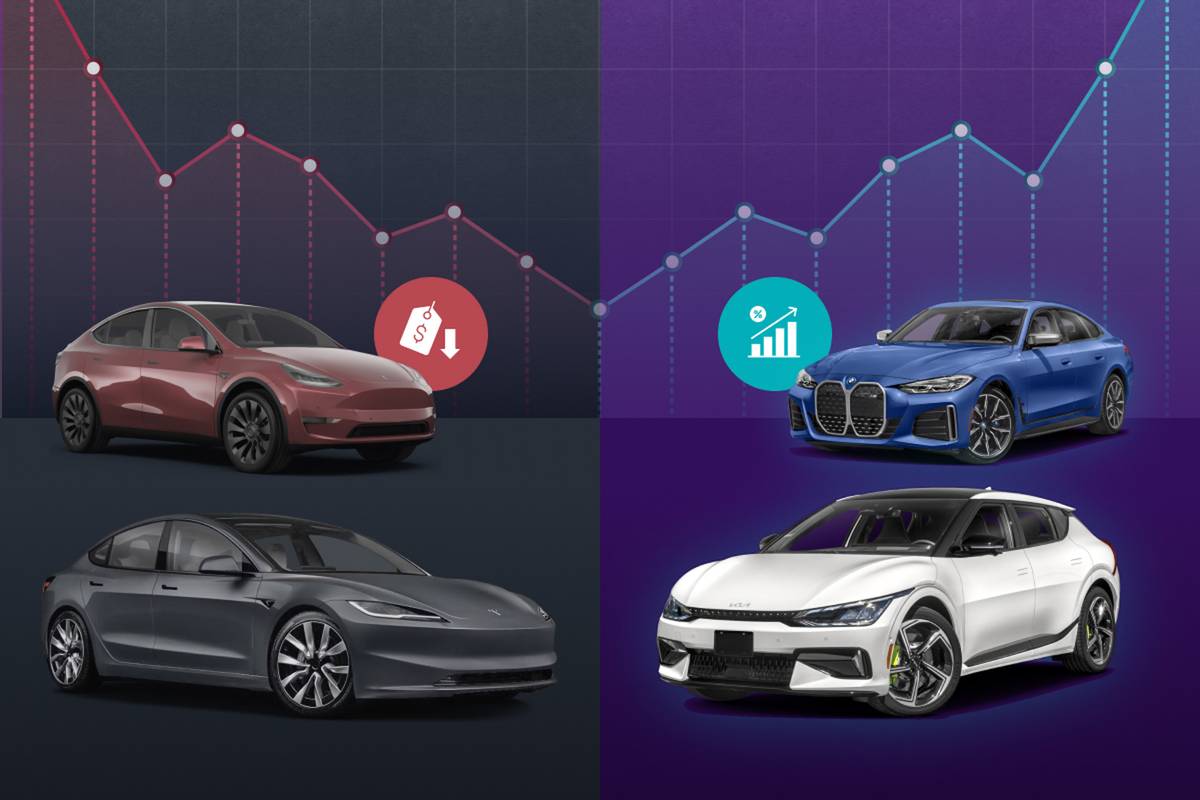Used Tesla Prices Are Dropping; Should Buyers Take Advantage or Buy An Alternative?

For consumers in the market for a used electric vehicle, shifting trends mean both new opportunities and potential concerns. As more electric models enter the market, buyers have more choices than ever; however, pricing for some used EVs, particularly Teslas, are falling at a faster rate, raising questions about long-term depreciation and value retention. Once the dominant force in used EVs, Tesla is facing increasing competition as consumer preferences evolve and other brands gain traction. We dug into Cars.com data as of February 2025 to see how these trends are shaping up and if used EV shoppers should take advantage of them.
Related: 2026 Tesla Model Y First Drive: How Much Better Is It Than Ours?
What’s Driving the Decline in Used Tesla Demand?
Several factors are contributing to the slowdown in interest and declining prices for used Teslas, including:
- Aging inventory
- More EV choices
- Lower new-EV prices
- Tesla-specific market shifts
- Political and brand factors
Aging Inventory
Tesla has been selling EVs at scale longer than any other brand, and the average age and mileage of its used models are increasing faster than for competing EVs. This puts downward pressure on prices since older, high-mileage vehicles tend to sell for less and there are more older Teslas now available.
More EV Choices
Consumers now have far more options when shopping for a used EV. There were 76 different used models available in February, compared to just 58 the same time a year prior — a 31% increase. This diversification means buyers are no longer defaulting to Tesla when considering an EV; in fact, interest in non-Tesla used EVs has grown 28% year over year, showing consumers are actively looking at alternatives.
Lower New EV Prices
The price of new EVs has been holding steady the past couple of years; the average new EV price was up only 3% year over year in February. More affordable options are emerging, too, including models like the Toyota bZ3X and Kia EV3, which are both targeting a starting price of around $40,000 before incentives. And as the federal EV tax credits are still available for many models, some buyers are choosing to purchase new rather than shop used.
Tesla-Specific Market Shifts
The rollout of new and updated Tesla models, such as the refreshed Model Y, updated Model 3 and the Cybertruck, has influenced used Tesla demand. As the Cybertruck became more available in the used market, it led to a temporary spike in search activity for used Teslas in May 2024, but the boost has since faded. The automaker’s overall used search volume has since continued its downward trend, falling 7% year over year.
Political and Brand Factors
Tesla has also seen some shifts in consumer sentiment following CEO Elon Musk’s increasing political involvement. Interest in Tesla vehicles began diverging from the rest of the EV market after Musk’s high-profile political endorsement of Donald Trump in mid-2024. While it’s unclear how much this has directly impacted used vehicle sales, the data suggests a decline in Tesla’s brand perception among certain consumer segments.
How Does This Compare to the Rest of the Used EV Market?
Even as Tesla’s dominance erodes, the used EV market as a whole is still expanding, with overall searches in February up 11.9% year over year. Inventory of non-Tesla used EVs has surged 32% year over year, as well, compared to Tesla’s more modest 13% increase. However, Tesla still holds the largest share of the used EV segment at 38.6%, but that’s down from 42.3% the same time a year prior as more brands gain ground.
Pricing trends vary by brand, too. Overall, used EV prices have seen a 3.9% drop in prices year over year, and used Tesla prices are down 6.6% for the same timeframe — the largest drop among major EV brands. In contrast, BMW EV prices have increased 11.6%, driven by an influx of late-model i4 coupes and i5 sedans.
Looking ahead, Tesla’s used-car pricing may continue to fall as inventory ages further. However, the company’s ongoing dominance in the EV space means it will remain a major player in the used market even as competitors close the gap. Whether or not Tesla can reverse its downward trend in consumer interest will likely depend on how well it adapts to an increasingly competitive all-electric landscape.
More From Cars.com:
- 2024 Tesla Model 3 Receives Numerous Updates, Priced From $40,380
- Here Are the 11 Cheapest Electric Vehicles You Can Buy
- What to Know Before Purchasing an Electric Vehicle: A Buying Guide
- More Tesla News
What Does This Mean for Consumers?
For buyers, the decline in used Tesla prices presents an opportunity. With Tesla values dropping faster than the broader used EV market, deals are becoming more common, particularly for higher-mileage models. However, buyers should also consider long-term resale value; while Teslas once held their value better than most EVs, that advantage is shrinking as more used models flood the market.
This also means the situation is less favorable for current Tesla owners looking to sell or trade in. With resale values taking a hit, trade-in offers from dealers are likely to be lower than they were previously, and private sellers may face increased competition from a growing supply of used Teslas. Owners of older, high-mileage Teslas will likely feel the biggest impact, as these vehicles are depreciating faster than newer models.
Related Video:
Cars.com’s Editorial department is your source for automotive news and reviews. In line with Cars.com’s long-standing ethics policy, editors and reviewers don’t accept gifts or free trips from automakers. The Editorial department is independent of Cars.com’s advertising, sales and sponsored content departments.
Featured stories




